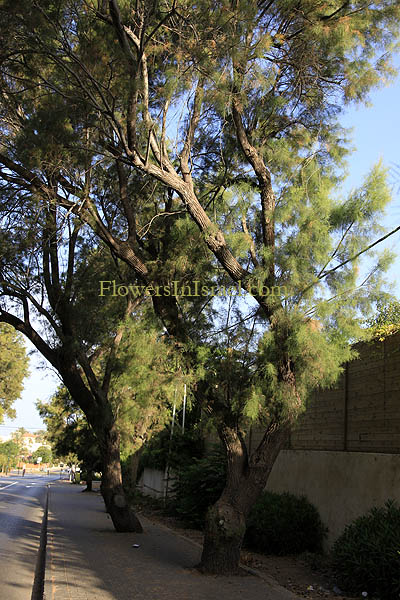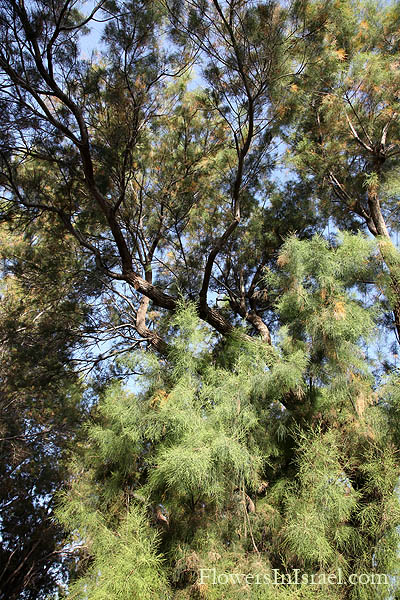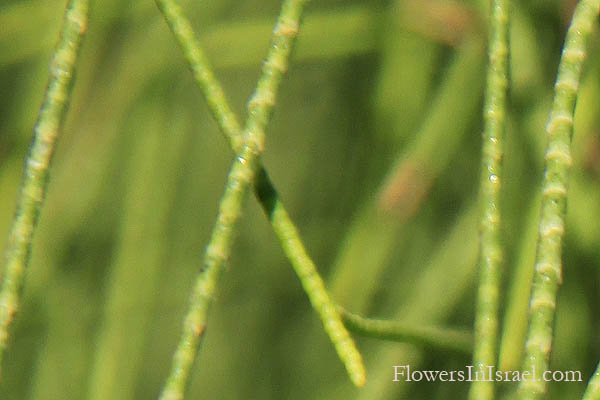Hebrew: אשל הפרקים, Arabic: أثل، طرفاء
| Scientific name: | Tamarix aphylla (L.) Karsten | |
| Synonym name: | Tamarix articulate Vahl | |
| Common name: | Athel tree, Athel tamarisk | |
| Hebrew name: | אשל הפרקים | |
| Arabic name: | أثل، طرفاء | |
| Plant Family: | Tamaricaceae, אשליים |

Location: Herzliya Pituach, Keren Hayesod street |
| Life form: | Tree | |
| Stems: | Up to 18 m, numerous slender branches | |
| Leaves: | Alternate, scale | |
| Inflorescence: | Spike-like racemes | |
| Flowers: | Pink, white | |
| Fruits / pods: | Capsule | |
| Flowering Period: | July, August, September, October, November | |
| Habitat: | Desert, Thermophilous plants | |
| Distribution: | Mediterranean Woodlands and Shrublands, Semi-steppe shrublands, Shrub-steppes, Deserts and extreme deserts | |
| Chorotype: | Sudanian | |
| Summer shedding: | Perennating |

Location: Herzliya Pituach, Keren Hayesod street Derivation of the botanical name: Tamarix, the Latin name for this plant derived from the Tamaris River in Spain. aphylla, without leaves. articulate, jointed. The Hebrew name:אשל, eshel, ʾḗšel, Akkadian: ašlu; Ugaritic: Eshel; Aramaic אַתְלָא, (atla); Arabic أَثْل (ʾaṯl).
H.B.Tristram (11 May 1822 - 8 March 1906) , The Natural History of the Bible: "Abraham planted a grove (eshel) in Beersheba" (Gen.XXI.33): "Saul abode in Gibeah under a tree (eshel) at Jabesh" (I Sam. XXXI.13); but, in 1 Chron. X.12, it is called 'elah,' an oak. Critics are agreed that 'eshel' signifies some particular tree, and the best authorities identify it with the Arabic asal, the Tamarisk tree. John Smith, Bible Plants, their history,(London, 1878): "eshel comprehends all plants having single hard-wooded stems, growing from a few to 100 or more feet in height... there are only about 50 kinds of such trees in Palestine of which thirty are mentioned by special names in the Bible... if the word eshel does not mean tamarisk, there is no allusion to these beautiful trees in the Bible." No less than seven species of Tamarisk are found in Palestine, and several of them in great abundance." Tamarix aphylla is the largest Tamarix.
Bible resources:

Location: Herzliya Pituach, Keren Hayesod street |
